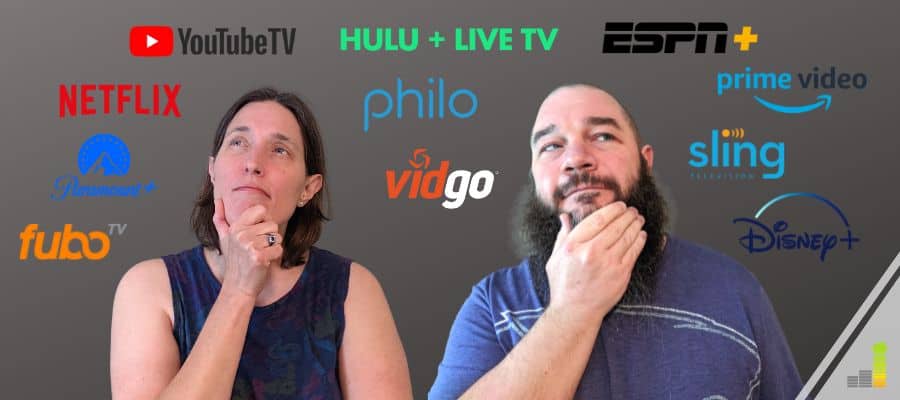Amazon announced a new Fire TV Channels feature that will bring 11 local NBC News channels, four Telemundo stations, and content from more than 400 partners to Fire devices this summer. And NBCUniversal announced that its streaming platform, Peacock, will be the only way to watch an NFL contest on December 23 between the Los Angeles Charges and Buffalo Bills. The moves are the latest developments in shifting from linear TV to streaming services.
Since July 2022, streaming services have captured more viewers than cable or broadcast TV. However, as more people cut the cord and carriage disputes continue, a critical question is emerging – could the shift make it harder for people to watch their local channels and live sports?
Table of Contents
Declining Revenue For TV Distributors is Creating a Shift to Streaming
For decades, broadcast station groups (BSGs) have collected significant retransmission fees from distributors to carry their channels. In April, S&P Global Market Intelligence reported that United States TV station owners collected more than $14 billion in retransmission fees in 2022, up 3% from 2021.
A crucial revenue stream for network affiliates, these fees support the production of local news, weather updates, and community programming. Yet, as viewers increasingly opt for streaming services, the traditional pay-TV landscape is changing dramatically.
People in the areas affected by the Amazon deal with NBC News are already feeling that reality. Those places are: the Bay Area, Boston, Chicago, Connecticut, Dallas, South Florida, Los Angeles, New York, Philadelphia, San Diego and Washington D.C. Telemundo California, Florida, Noreste and Texas are also impacted.
Following viewers and chasing profit, networks have steadily shifted programming to streaming platforms. For example, after launching Peacock, NBCUniversal invested money in original programming and live sports for its streaming platform.
Paramount Global did the same with Paramount+ but added on the popular free ad-supported streaming service (FAST), Pluto TV. In addition, Fox Broadcasting Company invested in its own FAST platform, Tubi. As streaming costs rise, FAST options increasingly dominate the market.
The result is not only declining programming on broadcast TV – “Days of Our Lives” moved exclusively to Peacock, along with the already-mentioned NFL playoff game, but also blackouts caused by carriage disputes.
Carriage Disputes Disrupt TV, Creating Blackouts
In October 2022, during the heart of the college football season, ESPN was suddenly missing from Dish TV and Sling TV. In Chicago, Los Angeles, New York, and five other cities, ABC was gone, too. The culprit for millions of fans missing their teams’ games? A carriage dispute between The Walt Disney Company (Disney) and Dish Network.
It wasn’t the first fight over retransmission fees. Between January and March 2023, carriage disputes affected fuboTV, Hulu Live, and DirecTV customers. The answer to why this keeps happening and how streamers can avoid losing access to local channels lies in understanding the business of TV.
What Are Carriage Disputes, and Why do They Happen?
Cable companies, satellite providers, and live TV streaming services distribute TV stations. Local broadcast stations and cable network operators own those stations. The Communications Act prohibits distributors from airing commercial TV stations without consent.
Every three years, broadcasters must choose whether to force distributors to carry their stations for free or allow them to carry them at a cost. If a broadcaster requires a distributor to carry its station, it cannot demand compensation.
Carriage disputes occur when distributors, such as DirecTV or YouTube TV, and broadcasters, such as Paramount Global or Disney, cannot agree on a fee to carry the networks in question.
Carriage Disputes Affect Both Cable Companies and Streaming Services
Streaming services that broadcast live TV are not immune from carriage disputes. Regulation has yet to catch up to changes in how people access TV.
Regulatory standards governing cable and satellite providers’ retransmission or carriage of networks don’t yet apply to streaming services. As a result, local affiliates cannot negotiate directly with streaming platforms like YouTube TV and FuboTV. Instead, they must wait on the media companies that own the networks to strike a deal with streaming platforms.
Recent Notable Fights Over Retransmission Fees
In late January 2023, fuboTV customers lost their local CBS stations in 160 major markets. Until the stations returned on March 31, customers watched a national feed devoid of local content.
On March 8, Hulu Live lost 34 local ABC affiliates owned or partially owned by the Sinclair Broadcasting Group (SBG) when Disney and SBG couldn’t reach a carriage agreement. Viewers got the stations back on April 21.
In March, DirecTV lost three dozen broadcast stations owned by third-party companies from its platform. In December 2022, Comcast Xfinity customers lost access to approximately 200 local broadcast stations owned by Nexstar Group.
Will Streaming Eventually Make Carriage Disputes Obsolete?
From 2010 until today, network affiliates, or BSGs that own or operate local channels, have steadily lost viewers. According to Insider Intelligence, less than half of U.S. households now subscribe to traditional pay TV. That number is expected to drop to 35% by 2027.
As a result, BSGs like Sinclair Broadcasting Group, Nexstar Media Group, and EW Scripps stand to lose some of the lucrative retransmission fees they have long enjoyed.
However, carriage disputes have followed distributors into the streaming era. If broadcasters move to lock their content exclusively on their platforms, they would both own and distribute the content, eliminating carriage disputes. However, regulatory concerns could evolve to meet such a development, especially if it hinders competition.
Avoid Retransmission Fees With an Antenna
One way to sidestep carriage disputes is by using an antenna to get local channels. When people access the free broadcast signal of their local networks through an antenna, there is no retransmission and no retransmission fees.
When live tv streaming services and cable or satellite companies lose channels during a dispute, people with an antenna can still watch their local channels. And besides the cost of purchasing the antenna, there is no fee to watch local networks this way.
Cord cutters fed up with fights over fees can find solace, and their local stations, through an antenna.
However, as broadcasters move more programming, news, and live sports to streaming platforms, the number of shows and sports available through an antenna could dwindle, leaving streamers in the same spot they find themselves now – frustrated.
Photo Credit: Shutterstock
I’m John Schmoll, a former stockbroker, MBA-grad, published finance writer, and founder of Frugal Rules.
As a veteran of the financial services industry, I’ve worked as a mutual fund administrator, banker, and stockbroker and was Series 7 and 63-licensed, but I left all that behind in 2012 to help people learn how to manage their money.
My goal is to help you gain the knowledge you need to become financially independent with personally-tested financial tools and money-saving solutions.






Leave a Reply